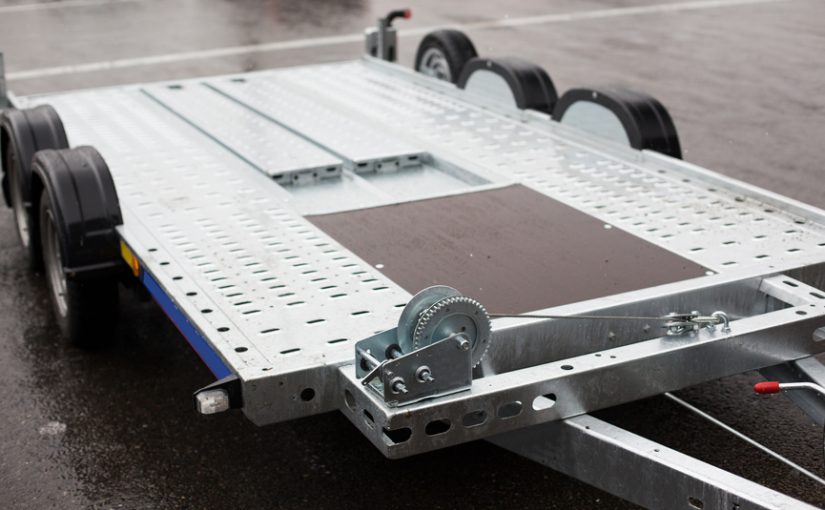
Towing a trailer behind your vehicle takes some getting used to. It’s not as fluid as simply driving a car, so there are a few tips and tricks to be learned before you start hauling.
- First things first, before you get behind the wheel, make sure to check your state’s driver handbook for road rules of operating a trailer. Many states require operators to stay in the far right lane, for example. You can obtain a driver handbook through your local Department of Motor Vehicles.
- Secure the trailer hitch correctly. For a ball hitch, the tongue on the trailer (the metal piece in front of the trailer) should fit over the towing vehicle’s hitch and should be secured with a locking mechanism. Sway control hitches are recommended in order to better control the tow behind you. Weight distribution hitches are also available, and should be used for heavier tows that exceed half of the towing vehicle’s weight.
There is a locking mechanism on the hitch that should have a locking pin for extra security. If the tow isn’t locked correctly, the trailer could come loose and hit a vehicle behind you. Pull the trailer connection upward to see if it detaches before you continue with anything else.
- Set up your electronic trailer brake controller according to the manual. The brake controller device, which should be installed in the cab of your vehicle, activates the trailer’s electric or electric-over-hydraulic brakes whenever you press the brakes in the tow vehicle. If the trailer brake wiring was not pre-installed in your vehicle, you’ll have to purchase a separate brake controller system.
- Be sure to check the brake lights and signals after you’ve connected the electrical wires from the trailer to the vehicle. Pro tip: If no one is around to tell you if the brake lights and signals work, find a reflective surface, like another car or a window, to check the signals in your rearview mirror.
If your signals and lights don’t work in the dark, other vehicles won’t be able to see you at all. Checking your lights right before you get on the road is a crucial part of preparation.
- Especially if this is your first time towing a trailer, it’s a good idea to practice maneuvering the vehicles in an open lot. After making sure there are no obstructions, practice backing up and making left and right-hand turns, as well as stopping the vehicle — to gauge how long it will take your trailer to come to a complete halt.
Make sure that you avoid jackknifing, especially when backing up. Jackknifing is when the angle between the vehicle and trailer is less than 90 degrees, forming a V-shape. This can severely damage both the hitch and trailer. If you feel like you’re close to jackknifing, pull your vehicle forward to straighten out. Keep your steering wheel movement to a minimum and guide the trailer gently.
Hayes Towing Electronics has the most advanced brake controlling systems available; they are easy to set up and don’t require hard-wiring to your tow vehicle. If you have a heavy load to tow, contact us for the most secure brake systems available.




